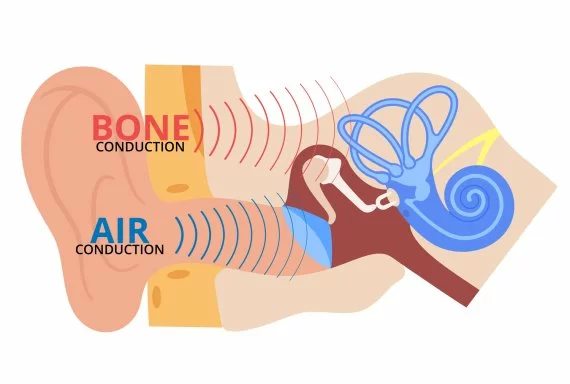Is it true that bone-conduction headsets are safe?
That's a great question. These devices have recently become popular among consumers, because music and cell phone signals are transmitted to the inner ear by vibrating the skull, leaving the ear canals open to environmental sounds. We, too, are concerned about claims that bone-conduction headsets are "safe" because sounds "skip the eardrum."
First, let's be clear, it is the inner ear, or cochlea, that holds the nerve receptors for sound and is susceptible to traditional noise exposures, not the eardrum. If a sound is loud enough, whether received through air conduction or bone conduction, it can cause damage to the inner ear structures. Therefore, use of a bone-conduction headset is not inherently safe or unsafe – as with any listening device, it depends on how loud the signal is and how long the individual is exposed. We have heard other concerns that safety and health professionals should consider, including poor sound quality, discomfort, tinnitus, and "leakage," the ability for others to overhear transmissions. Personal listening devices also carry a risk of distraction and reduced ability to hear important warning sounds. Most employers do not allow music listening in the workplace, particularly in high noise areas. For more information on music headphones and OSHA advice, see another CavCom FAQ.

Contact the professionals at CavCom to discuss your noise environments and communication needs to find the solutions that are right for your workforce.
- What is the difference between listening with one ear (monaural) vs. listening with both ears (binaural)?
- What does “volume-limited output” mean?
- Does CavCom offer high-fidelity acoustic filters with your electronic earsets?
- My job can be boring. Is it OK if I listen to music headphones while I'm working?
- I've seen headsets and hearing protectors advertised as OSHA-certified or OSHA-compliant - what does this mean?





